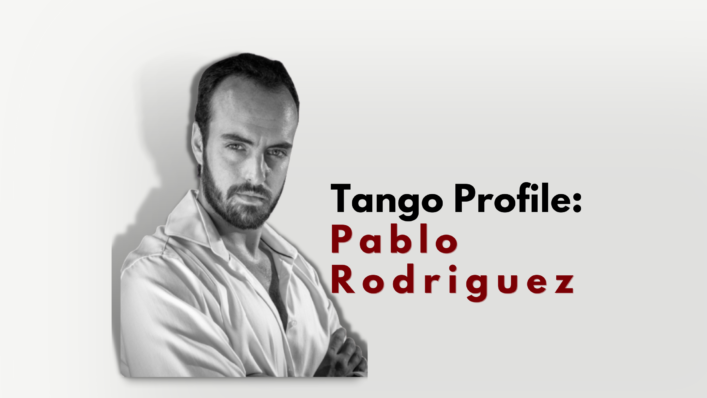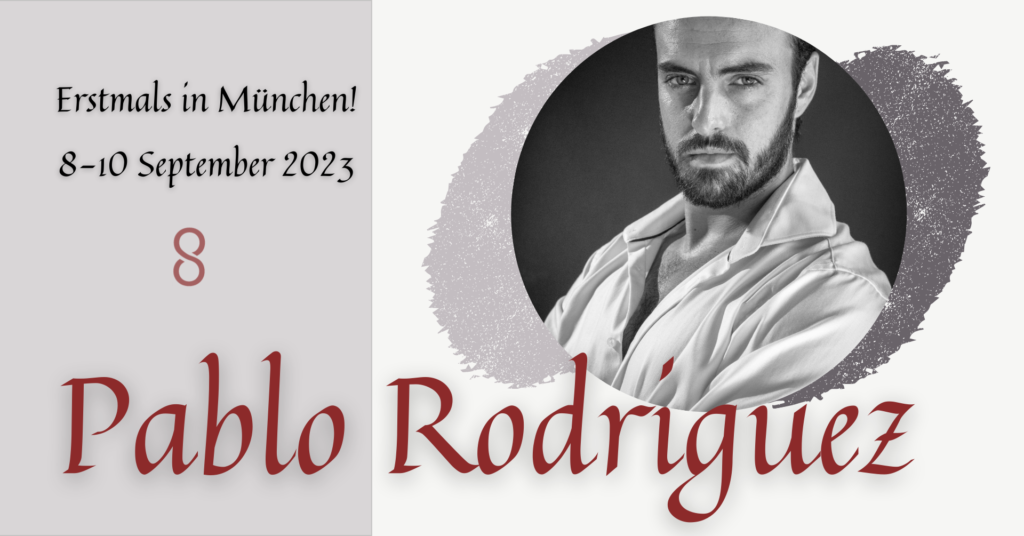
Tango Profile: Pablo Rodriguez
As tango enthusiasts, we often admire renowned tango maestros through their shows and videos. But how much do we truly know about them? Join us in this cycle as we delve into the lives and artistry of famous tango dancers, starting with world-renowned tango dancer, Pablo Rodriguez. Discover their journey, initial motivations, and what they love most about tango.

Pablo Rodriguez: A Tango Journey Begins
“I started to dance in 2002. It was in Buenos Aires, and my first real lesson was in ‘El Viejo Correo’ with Nina and Luis, an important tango place at that time, immediately I got invited by a young assistant to participate in another group, from that time I never stopped,” shares Pablo Rodriguez, recalling the moment his love affair with tango began. Mix of tango of music, theater, and popular culture drew him in from the start, and he knew that tango would forever be a part of his life.
Guided by Influential Maestros
Pablo’s tango journey was guided by a series of influential maestros. “My first maestros were for sure Carlos Perez y Rosa Forte. But I was learning a lot from different maestros,” he reminisces. This diverse group of teachers, including Samantha Dispari, Jorge Dispari, Maria del Carmen, Javier Rodríguez, Geraldine Rojas, Esteban Moreno, Claudia Codega, Julio Balmaceda, and Corina de la Rosa, contributed invaluable elements to his tango repertoire, shaping his unique style.
A Time of Tango Exchange
As part of Buenos Aires’ vibrant tango community, Pablo experienced a unique period of friendly exchange between seasoned milongueros and the emerging generation. “Our generation of dancers was in that kind of friendly exchange between the old milongueros and the new tango, it was a special moment that gave us a chance to develop for each of the dancers a kind of his or her own style in that mix,” he explains. This atmosphere encouraged dancers to bridge tradition and innovation, infusing tango with a fresh spirit while preserving its essence.
Tango’s Presence in Childhood
Growing up in Buenos Aires, tango had unconsciously permeated Pablo’s life through its presence in the streets, music, and culture. “Honestly, I realized tango had been a part of my childhood once I discovered tango, in the way of living, in the expressions, and of course in the Rock and Cumbia music I was listening before, the poetry of the streets… well, tango was everywhere in Buenos Aires, even without me being conscient about it,” he admits.
Preserving Tango’s Essence through Teaching
Today, Pablo’s main interest lies in teaching tango, connecting tradition with contemporary expressions, and preserving the art’s essence amid changing trends. “Now it has a lot to do with the teaching and the way that tango is changing, trying to keep, of course with humility, the possibility to connect the tradition of tango with the tango we dance today, without repeating a common formula of what is trending right now,” he shares. His commitment to maintaining the memory and feeling of tango reflects his dedication to safeguarding its heritage for generations to come.
A Universally Appreciated Connection
Beyond Argentina, tango’s popularity varies, but its ability to foster physical and cultural connections remains universally appreciated. “I am so impressed by the respect and love that a lot of people put into tango, and I feel so grateful with that and with the effort a lot of people do to keep tango alive,” Pablo remarks. He cherishes the happiness tango brings to people and the profound connections it fosters on and off the dance floor.
The Future of Tango
In Pablo Rodriguez, we see a passionate torchbearer of tango’s legacy, devoted to upholding its poetry and embracing its enduring allure: “I hope we can keep alive the memory and feeling of what tango expresses as poetry and all the development accumulated by nearly 100 years of work of the tango workers, artists and milongueros avoiding an exclusive atmosphere that only sees tango as a usable thing.”
The quotations included in this article are sourced from the Oslo Tango website.
